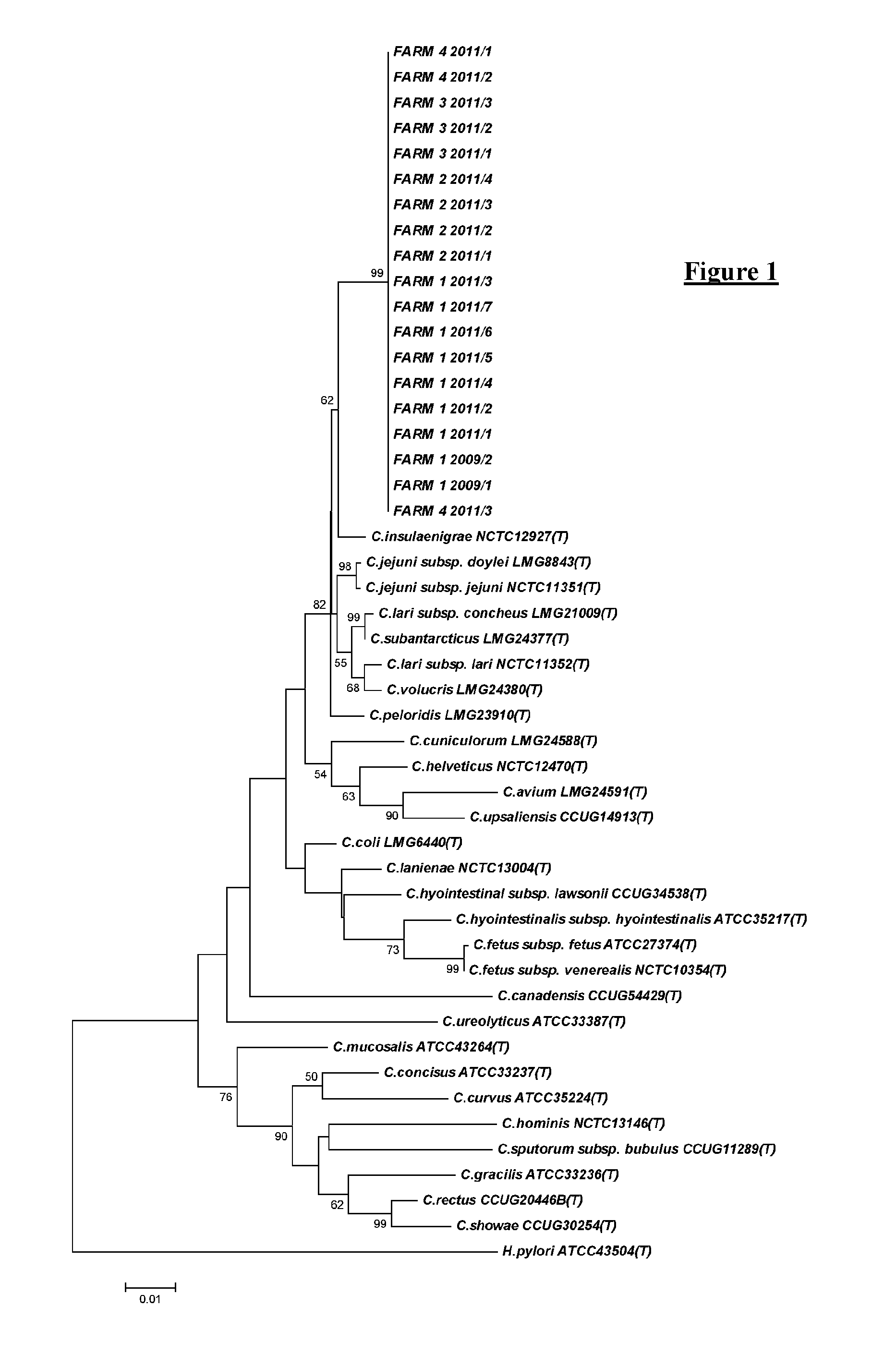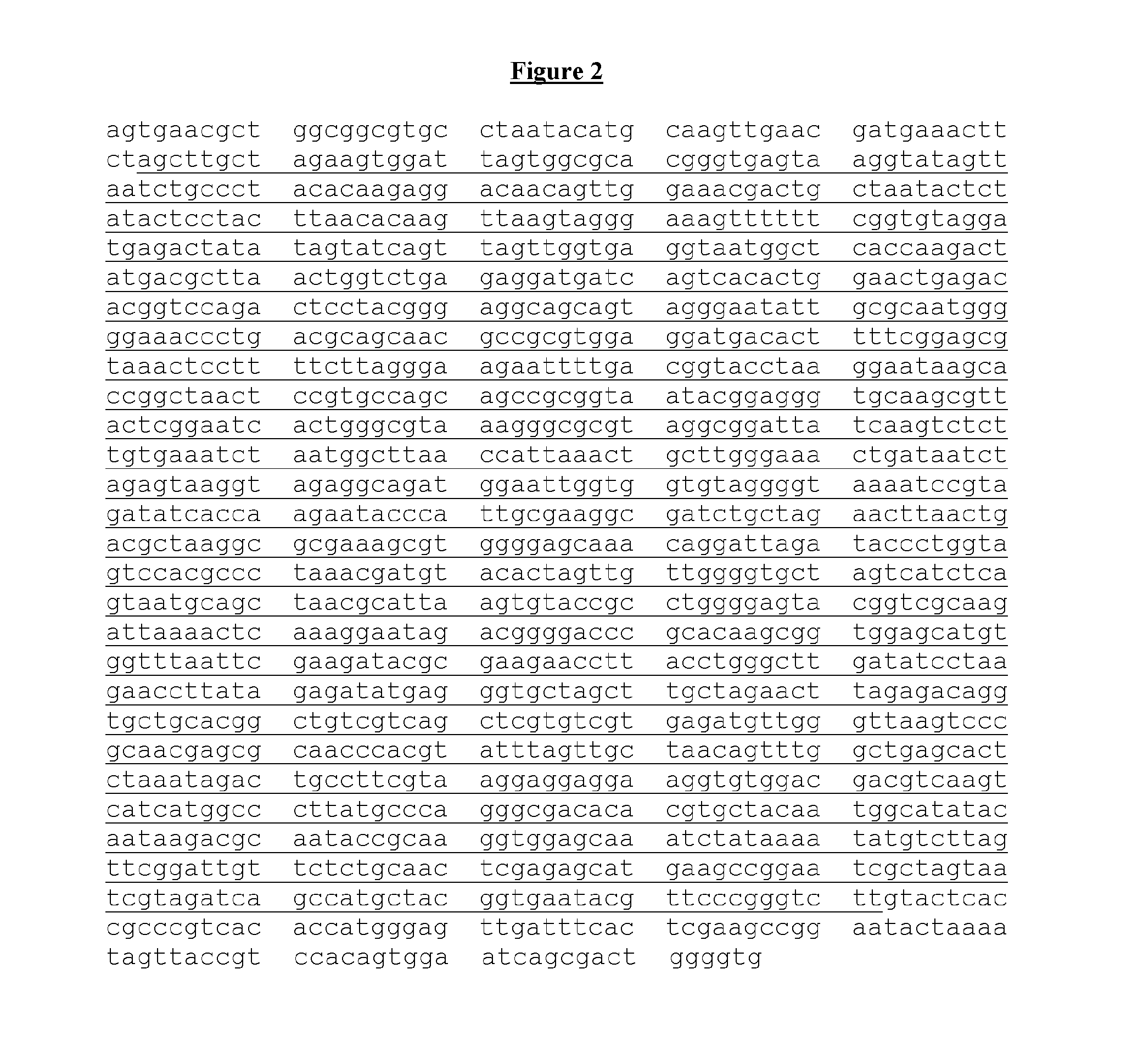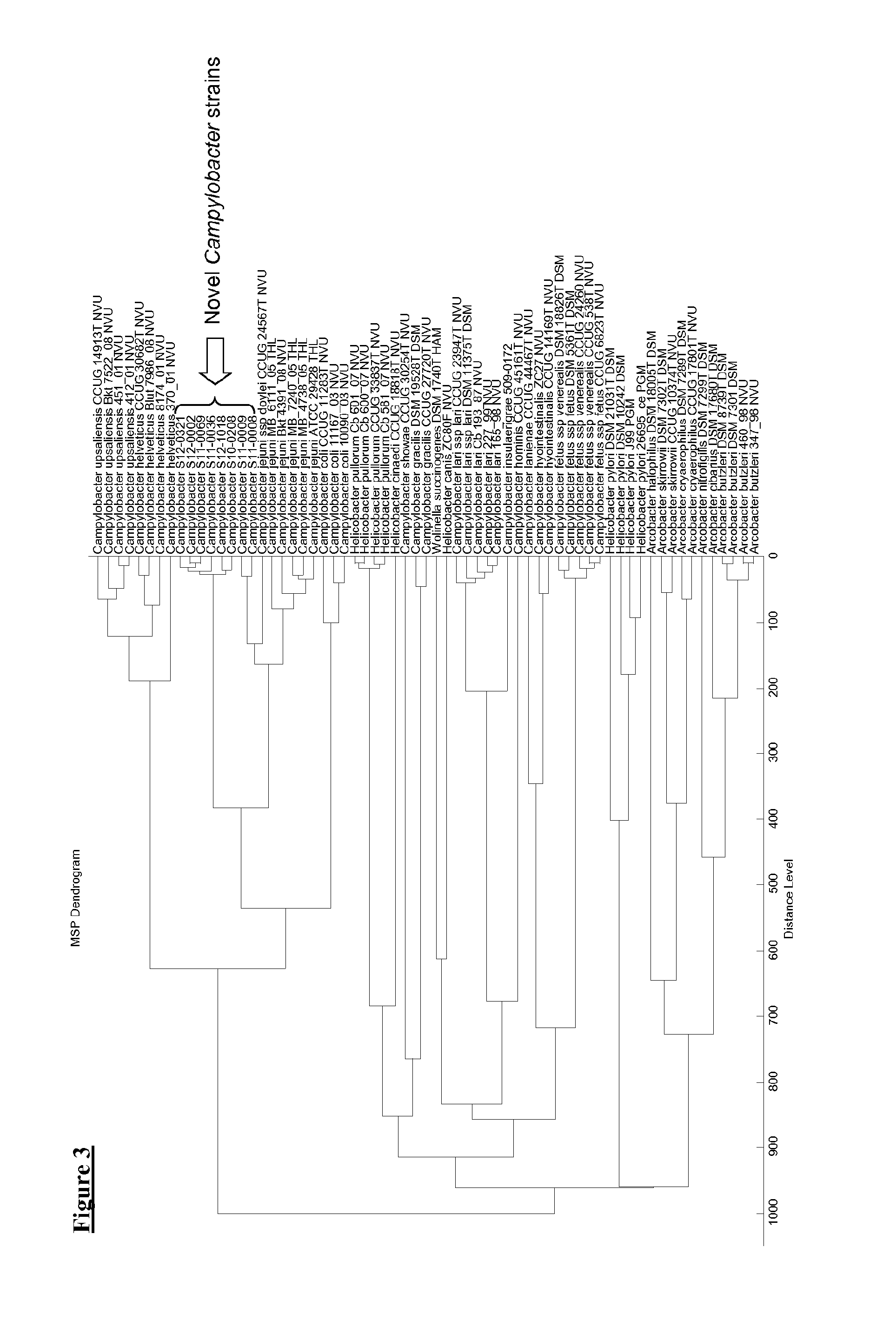Campylobacter bacteria and detection
a technology applied in the field of campylobacter bacteria and detection, can solve the problem of not being able to reproduce the disease experimentally using poultry or humans, and achieve the effect of reducing the risk of contamination
- Summary
- Abstract
- Description
- Claims
- Application Information
AI Technical Summary
Benefits of technology
Problems solved by technology
Method used
Image
Examples
Embodiment Construction
Materials and methods
[0110]Cases and Collection of Specimens
[0111]Cases of SLS / SLD were investigated on nine free-range layer farms in England. The flocks had a fall in egg production and increased mortality with the typical gross lesions as described in the background section, above. The birds examined were untreated and were either freshly dead or culled for examination.
[0112]On all farms samples of affected liver were collected aseptically and macerated in Preston broth (Bolton et at (1983) J. Clin. Pathol. vol. 36 p 78-83; Hoffman et at (1979) Can. J. Microbiol. vol. 25 p 8-16). The broths were incubated for seven days at 37±2° C. Subcultures onto 5% sheep blood agar (Table 1) were incubated at 37±2° C. in a microaerobic atmosphere (2.5 litre AnaeroJar and CampyGen atmosphere generation system Oxoid Ltd Basingstoke). Plates were examined for evidence of growth after three and seven days of incubation. Growth was then sub-cultured for basic Campylobacter phenotypic confirmation.
[...
PUM
| Property | Measurement | Unit |
|---|---|---|
| temperature | aaaaa | aaaaa |
| Tm | aaaaa | aaaaa |
| Tm | aaaaa | aaaaa |
Abstract
Description
Claims
Application Information
 Login to View More
Login to View More - R&D
- Intellectual Property
- Life Sciences
- Materials
- Tech Scout
- Unparalleled Data Quality
- Higher Quality Content
- 60% Fewer Hallucinations
Browse by: Latest US Patents, China's latest patents, Technical Efficacy Thesaurus, Application Domain, Technology Topic, Popular Technical Reports.
© 2025 PatSnap. All rights reserved.Legal|Privacy policy|Modern Slavery Act Transparency Statement|Sitemap|About US| Contact US: help@patsnap.com



